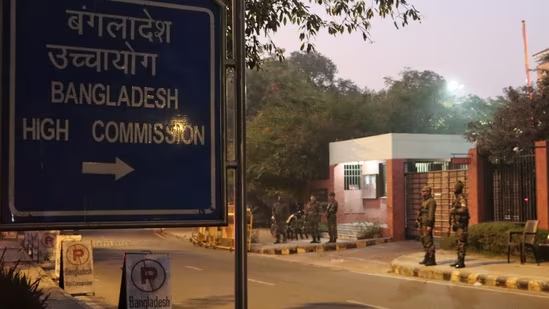The only sunlight that reaches the Moon during a lunar eclipse passes via Earth’s atmosphere, turning it red. Here’s everything you need to know about today’s eclipse.
Today, we will witness a partial lunar eclipse also known as Chandra Grahan. We are expected to see it around 2:39 PM IST. The full eclipse will be noticeable around 3:46 PM IST. The lunar eclipse will appear at its maximum around 4:29 PM IST.
A lunar eclipse is also called a blood moon as the earth’s shadows make the moon’s colour appear red. The eclipse is excepted to end around 5:11 PM IST and continue to be visible till 6:19 PM IST today. Today’s total lunar eclipse marks the final one for the ensuing three years. The following lunar eclipse occurs in March 2025. However, at that time, we will continue to observe partial lunar eclipses.
Lunar eclipses occur when the Earth occasionally passes between the Sun and the Moon during the Moon’s orbit around the Earth and the Earth’s orbit around the Sun. The Moon is then partially or entirely shielded from sunlight as a result of the Earth. On the surface of the Moon, this casts a red shadow.
The Moon turns red during a lunar eclipse due to the same process that makes our sky blue and our sunsets crimson. Rayleigh scattering is the term for it. The only sunlight that reaches the Moon during a lunar eclipse passes via Earth’s atmosphere, turning it red.
Why is it a partial eclipse?
Lunar eclipses come in total and partial forms. When a portion of the Moon passes through Earth’s shadow, a partial lunar eclipse occurs. Earth’s shadow typically appears very dark on the side of the Moon during partial eclipses. However, how the Sun, Earth, and Moon align determines what may be seen from Earth.
On the other hand, a total lunar eclipse only occurs when the Sun and Moon are direct across from one another. The Moon is under the shadow of the Earth, but some sunlight still reaches it, giving it the appearance of being red. During a full lunar eclipse, the moon seems red for the same reason that we see the sky as blue. Since blue light has a short wavelength, it is dispersed widely as it travels through the Earth’s atmosphere. Redder light can now flow through and bounce off the Moon thanks to this.
When can you watch it?
In Eastern regions of the country, including Kolkata and Guwahati, the total phase of the eclipse would be in process when the moon rises. However, totality would not have been complete for other cities, such as Delhi, Mumbai, Chennai, and Bengaluru, until Moonrise. However, most other Indian cities will be able to see a partial eclipse.
Is the lunar eclipse safe to watch?
Dr. Shibal Bhartiya, Senior Consultant Eye Specialist at Fortis Memorial Research Institute explains, “It is perfectly safe to watch a lunar eclipse with naked eyes. Even during the eclipse, you are only looking at the moon, at night just like any other day. In fact, it is less bright than the full moon. So, it actually safe to view a lunar eclipse without any eye protection or special precautions. This is true for all kinds of lunar eclipses, whether partial, penumbral or total eclipse of the Moon.”
“On the other hand, a solar eclipse can damage your eyes by damaging your retina, resulting in solar retinopathy, which may cause loss of vision,” she adds.
The event will be broadcast live on YouTube a number of times. For direct viewing, binoculars or a telescope would improve the vision and the red colour, you don’t need any special equipment to see a lunar eclipse.






























